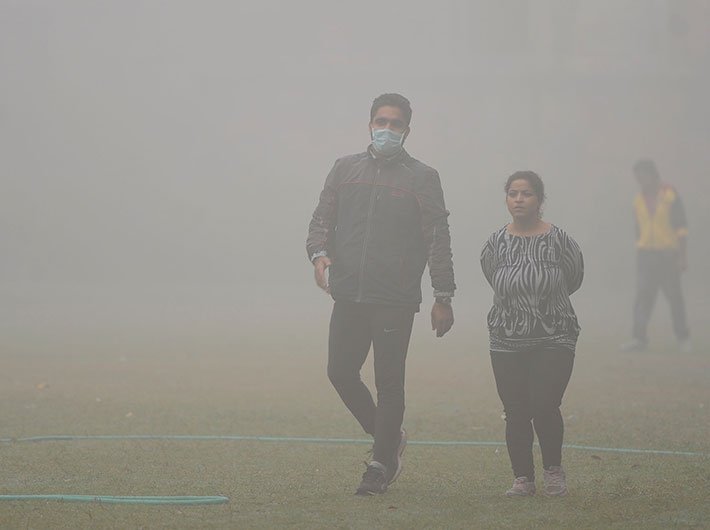The smog that snuffed light and fresh air out of Delhi and other northern parts of India for almost a fortnight is still fresh in memory. Combustion of various types, like fire crackers and burning of crop waste in the fields of Punjab and Haryana, were seen as the main reason behind the deadly air.
Research now reveals that toxins released from such activities in countries close to the equator, like India, are far more responsible for the overall increase in toxic ground level ozone. Published in Nature Geoscience journal in November, the study points out how south India, south and southeast Asia were more responsible for global ozone spikes in the period between 1980 and 2010 as emissions declined in China, North America and Europe during that period.
This means if North Americans or Chinese were to burst fire crackers for a month at a stretch, the gases emitted would not add to the ground level global ozone or tropospheric ozone as much as Indians bursting them, even for three days.
Read interview with Jason West, lead author of the study
Greenhouse gases react with sunlight to form ozone, which is also a key greenhouse gas. And sunlight is available in abundance near the equator. So any increase in the ground level ozone globally would be pointing fingers at the local emissions in south latitudinal countries rather than emissions made by say China, the study claims.
J Jason West, the lead author of the report prepared by scientists of University of North Carolina in the US, said that the Indian smog had ozone as its key component. Ozone is formed when greenhouse gases like nitrogen oxide (NOx), carbon monoxide (CO) and volatile organic compounds (VOCs) react with sunlight. Hence, this happens more in regions closer to the equator than those far away from it, he said.
“The thick smog certainly contained ozone among the mixture of pollutants present. That pollution likely resulted from local sources. One message of our research is that in addition to air pollution that is generated locally, ozone is also elevated due to emissions on a global scale, and that emissions from the tropics are particularly important for global ozone,” he said.
But this doesn’t mean that other countries need not play any part in mitigation of CO2 emissions. “The argument of locational disadvantage cannot be used to demand that the poorer countries around the equator, despite lower emissions of ozone precursors but with magnified impact of heat and sunlight, should take on the larger burden of mitigation. While all short-lived climate forcers will have to be part of the mitigation mandate across all regions (in addition to the responsibility for CO2 reduction), the developed world will still have to take on the larger burden of mitigation due to their absolute high emissions as well as historical emissions,” says Anumita Roy Chowdhury, executive director, research and advocacy, Centre for Science and Environment (CSE).
She said that she did not dispute the science but it did not change much as far as CO2 emissions are concerned. “This new genre of science on short-lived climate forcers should not confuse strategies that are needed to control long lived climate forcers like the CO2 that is primarily a heat trapping global warming gas. In case of ozone precursors like nitrogen oxides, carbon monoxides and volatile organic compounds, etc. are primarily local air pollutants with serious local health impacts. In such cases health protection in individual countries in tropics or sub-tropics will have to be the primary driver of change and that will give the co-benefits of climate mitigation. Therefore, this science has to inform local policy and action in all regions.”
On the other hand, Sunita Narain, director general, CSE, says, “It is indeed an irony that the countries and people who have least contributed to the creation of the problem will be worst impacted. It only confirms that the world needs a liability regime so that countries and particularly poor can be compensated for climate change impacts.”
Excerpts from the study
In particular, increase in O3 (ozone) precursor emissions in the tropics and subtropics significantly influence the global BO3 (ozone), and the findings suggest that emissions increase from southeast, east and south Asia have been most important for the BO3 increase. This can be attributed to the strong photochemical reaction rates, convection and NOx sensitivity in the tropics and subtropics.
As a result, the global BO3 might continue to increase due to a continued equatorward shift of emissions, even if global anthropogenic emissions remain unchanged or decrease. The location of emissions and the dominant role of emissions from the tropics and subtropics deserve greater emphasis in future research and projections of global tropospheric ozone.
Menon is a freelance journalist
(The story appears in the December 16-31, 2016 issue)

